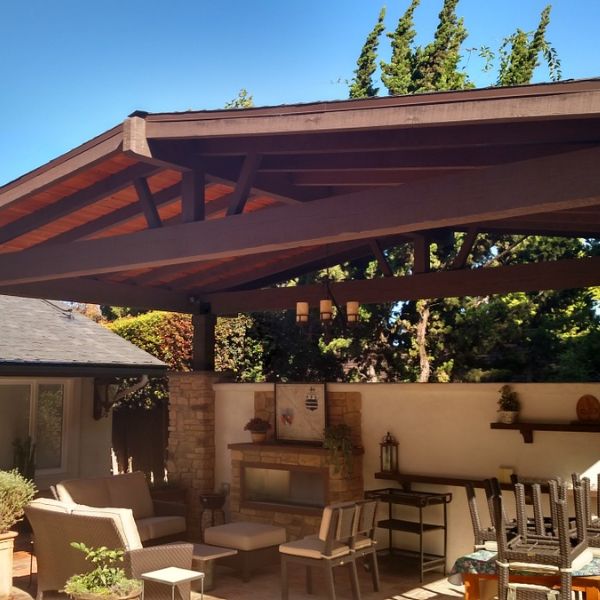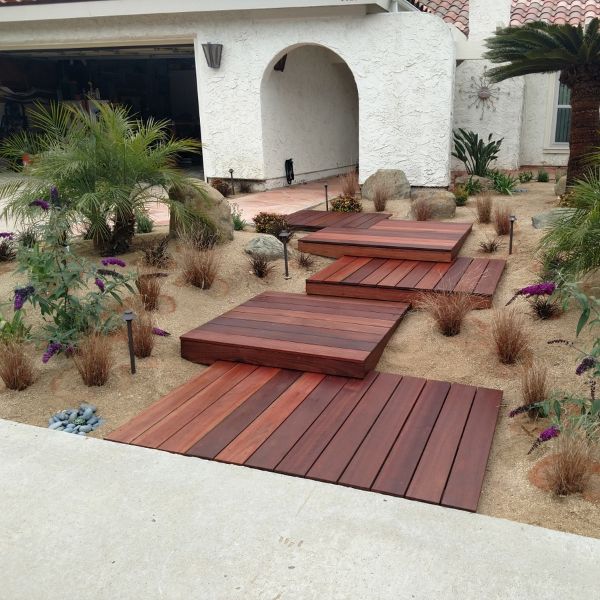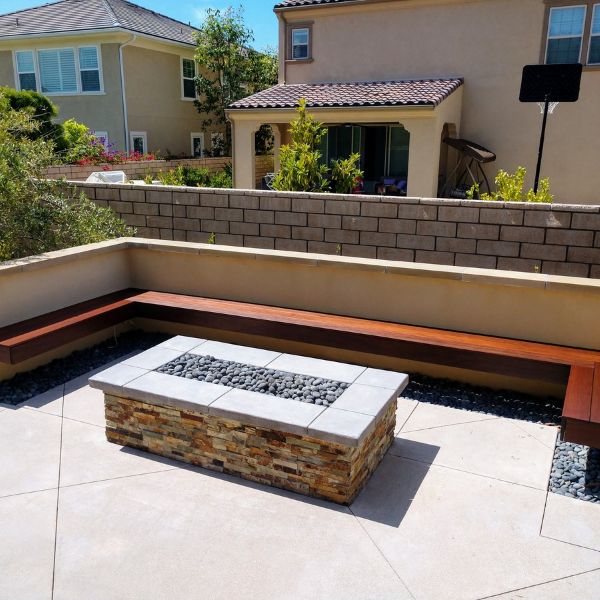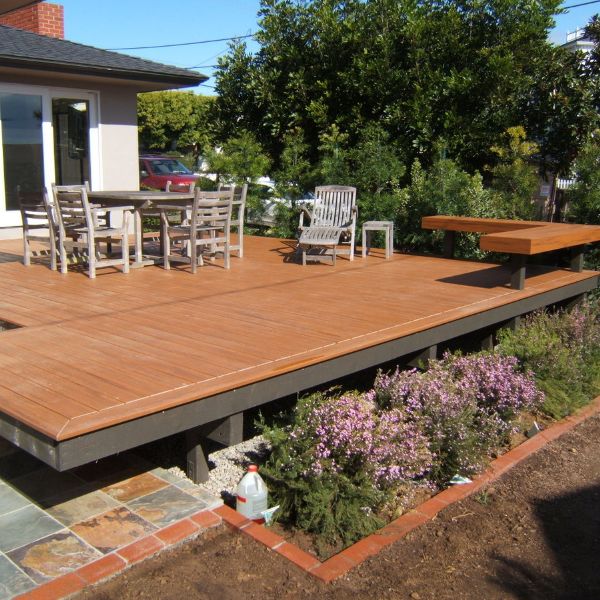The Ultimate Guide to Pavers in Southern California
Are you considering transforming your outdoor living spacewith pavers? Pavers are not only versatile but also offer many benefits that make them an excellent choice for patios, driveways, and walkways.
At Wilson Woodscape, landscape contractor, Jeff Wilson, has the expertise to create a stunning and durable surface that will stand the test of time. Call 619-838-1398today to learn more about what we can do for you.
Why Choose Jeff Wilson for Your Paver Project
Jeff Wilson has over 25 years of landscape construction designs unique concepts using custom ironwork, woodwork, concrete work, and more to elevate your space. No matter what you have in mind, no project is too big for Wilson Woodscape. We love hearing about customers’ new ideas and working out the best way to help them obtain a beautiful landscape.
Throughout the entire process, our skilled San Diego landscaper contractor prioritizes attention to detail and quality workmanship to ensure the finished product meets or exceeds our client’s expectations.
What Are Pavers? Materials & Uses for Outdoor SurfacesWhat Are Pavers?
Paversare crafted from materials like concrete, clay, natural stone, or brick, that serve as the building blocks for creating durable surfaces in outdoor spaces like driveways, patios, and walkways. With a wide array of sizes, shapes, and colors, pavers offer endless design possibilities.
With proper planning and execution, you can not only enhance the aesthetic charm but also improve the functionality of any outdoor area, achieving the desired look and purpose.
Benefits of Pavers
Benefits of pavers include:
- Durability and Resilience: Pavers offer a stable, long-lasting surface that can withstand heavy loads and frequent foot traffic when installed properly.
- Low Maintenance: Pavers require minimal upkeep, typically only needing occasional cleaning and sealing.
- Versatility: Pavers can be applied in various outdoor settings, including patios, walkways, driveways, pool decks, and more.
- Aesthetic Customization: With an extensive range of colors, shapes, and sizes, pavers can be tailored to complement the overall design of your outdoor space, creating an inviting and visually appealing environment.
- Easy Replacement: In the event of damage, individual pavers can be effortlessly replaced without affecting the entire surface.
- Intricate Designs: Pavers provide the ability to create intricate patterns and designs, adding a unique touch to your outdoor area.
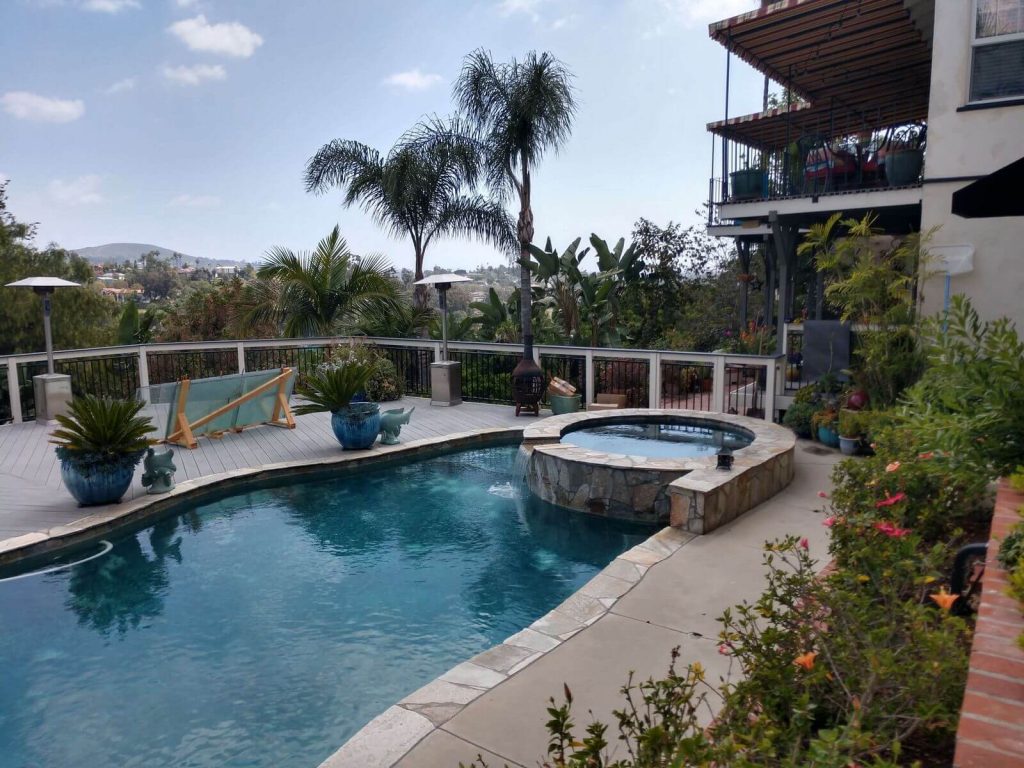
Types of Pavers
Driveway Pavers
Driveway paverscome in a diverse array of styles, colors, and materials including concrete, brick, stone, cobblestone, and flagstone. These options provide a versatile platform for crafting distinctive and appealing designs, showcasing driveway pavers’ reputation for enhancing both the durability and aesthetic appeal of your home’s exterior.
Brick Pavers
Brick paversare fired at higher temperatures than typical wall or chimney bricks, making them more resilient and long-lasting. They’re ideal for outdoor paving projects to provide a classic aesthetic and come in a variety of colors, sizes, and finishes. To ensure a stable and level surface for your project, masonry sand is often used as a bedding material beneath the brick pavers.
Pool Deck Pavers
Pool deck paversare specifically engineered to furnish slip-resistant and durable surfaces around pool areas. Their exceptional versatility, longevity, and ease of installation set them apart. Bear in mind that a sturdy base is imperative for the proper installation of pool deck pavers, ensuring their long-term performance and resilience.
Patio Pavers
Patio paversare a versatile and durable choice for crafting beautiful and functional outdoor living spaces, including backyard patios. With a wide range of colors, patterns, and materials like concrete, brick, stone, or porcelain, patio pavers offer extensive design possibilities. Renowned for their exceptional strength, they’re suitable for various hardscaping projects and many manufacturers even provide lifetime guarantees, ensuring their enduring quality.
Backyard Pavers
Backyard paversare versatile landscaping elements, ideal for constructing pathways, play areas, patios, and walkways in your outdoor space. Crafted from materials like concrete, brick, stone, or porcelain, they offer boundless design opportunities. Renowned for their durability and longevity, backyard pavers add both functionality and attractiveness to your landscape.
Porcelain Pavers
Porcelain paversare crafted from porcelain clay and designed for outdoor use. They offer a modern and sophisticated aesthetic, low maintenance requirements, and high durability. Porcelain pavers are impervious to water absorption, making them suitable for exterior applications and able to withstand freezing temperatures in colder regions. These pavers are available in a variety of colors, patterns, and textures, and are perfect for patios, decks, and pool areas.
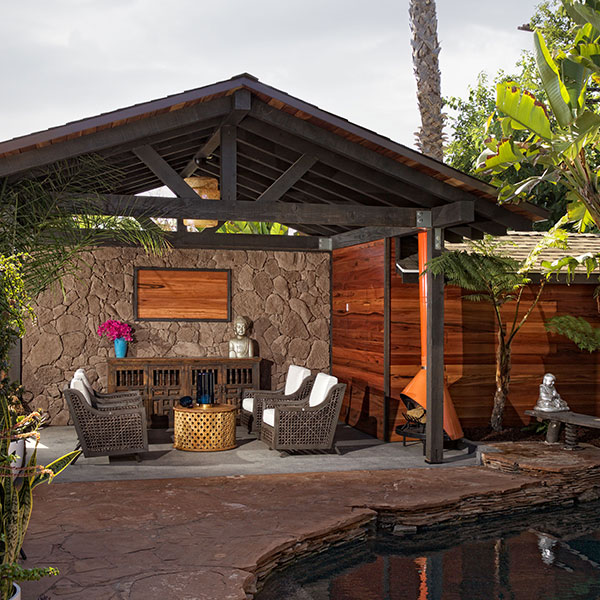
Planning and Designing Your Pavers
Initial Consultation
The initial phase of your paver project begins with a thorough consultation to understand your vision and goals. During this session, Jeff Wilson will evaluate the site, take precise measurements, and offer advice on design, materials, and the installation process.
Choosing a Design Pattern
After your consultation, it’s time to select a design pattern that complements the overall aesthetic of your outdoor space. Factors to consider when choosing a design pattern include the size and shape of the area, the type of paver being used, the desired aesthetic, and the amount of traffic the area will be exposed to.
You can create a unique and visually appealing paver installation with various design patterns available, such as a running bond, herringbone, basket weave, and circular patterns.
Calculating Paver Quantity
Once you have chosen a design pattern, the next step is to calculate the number of pavers needed for your project. This is done by dividing the total area of the project by the area of a single paver. Accurate paver quantity estimation is essential to ensure that you have the necessary materials for your project and to avoid incurring unnecessary expenses.
Preparing the Site for Paver Installation
Once the design is finalized, we begin the installation process. Here’s what you can expect when we prepare the site for installation:
- Excavation
- Remove existing soil and debris to create a stable foundation.
- Ensure pavers are installed at the correct level.
- Ensure water drains away from the house to prevent damage.
- Grading
- Level the soil and remove excess sand.
- Apply a layer of gravel or sand for a level surface.
- Prevent water pooling and erosion for long-term functionality.
- Base Material Installation
- Install a layer of compacted Class II road base.
- This mixture of gravel and sand provides stability and drainage.
- Crucial for the long-term success of your paver project.
Laying the Pavers: Step-by-Step Guide
Before proceeding with the paver installation, Jeff Wilson follows these steps for a successful outcome:
- Bedding Sand Preparation
- Spread bedding sand evenly in layers.
- Tamp down each layer for a level surface.
- Ensures stability and correct installation of pavers.
- Paver Placement
- Place pavers in the desired pattern with proper alignment.
- Start from a 90-degree corner or within the field.
- Use preset string for alignment and maintain straight lines.
- Ensure level and appropriate spacing during installation.
- Skillfully cut and shaped pavers for curves, edges, and features.
- Edge Restraint Installation
- Install edge restraints to prevent lateral movement.
- Maintain project integrity and security.
- Various materials (concrete, or plastic) can be used.
- Install along the perimeter for a secure, level surface.
Finishing Touches: Sanding, Compacting, and Sealing
Before finalizing your paver installation, Wilson will make sure to pay attention to these crucial steps:
- Joint Sand Application
- Apply joint sand to fill gaps between pavers for stability.
- Prevent weed growth and paver shifting.
- Use a plate compactor to firmly set the joint sand in place.
- Compaction
- An essential step for a stable, level surface.
- A plate compactor vibrates pavers and joint sand into place.
- Sealing
- Protect pavers from elements, stains, and wear.
- Enhance appearance with appropriate sealer for the material.
- Follow the manufacturer’s instructions for the best results.
Frequently Asked Questions
The best material for pavers depends on the specific project and its requirements. Common materials used for pavers include concrete, natural stone (such as granite or sandstone), brick, and clay. Each material has advantages and disadvantages, such as cost, durability, and aesthetic appeal.
A slabis a single piece of material, usually concrete, used as a flooring or paving material. A paveris a small, interlocking piece of material, such as concrete or brick, used to create a durable and flexible surface for walkways, patios, and other outdoor spaces. The main difference between a slab and a paver is their size and installation method.
Pavers can last for decadeswith proper maintenance and care. The lifespan of pavers varies depending on the material used, the quality of the installation, and the amount of foot traffic they receive. For example, concrete pavers can last 20 to 30 years, while natural stone pavers can last 50+ years. Proper cleaning, sealing, and regular upkeep can help extend the lifespan of pavers.
Discover the Benefits of Pavers for Yourself
Contact Wilson Woodscape today at 619-838-1398to schedule a consultation and see how we can transform your patio, walkway, or driveway into a work of art. With our attention to detail and commitment to quality, you can trust us to deliver exceptional results that exceed your expectations.

